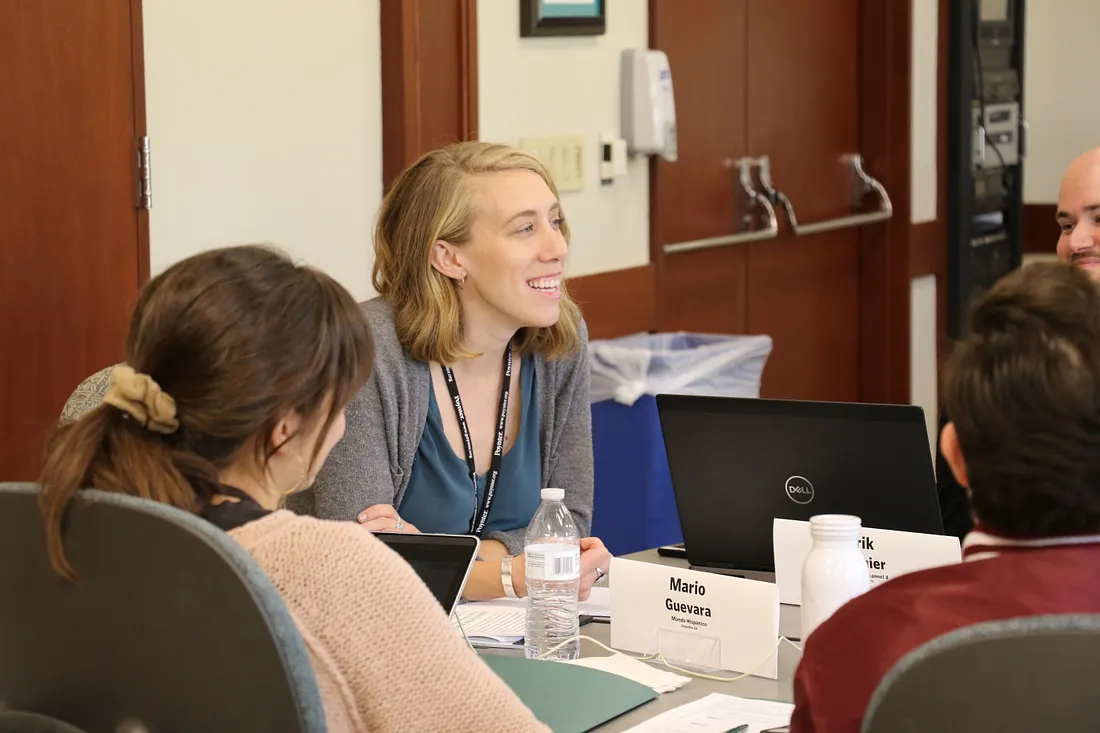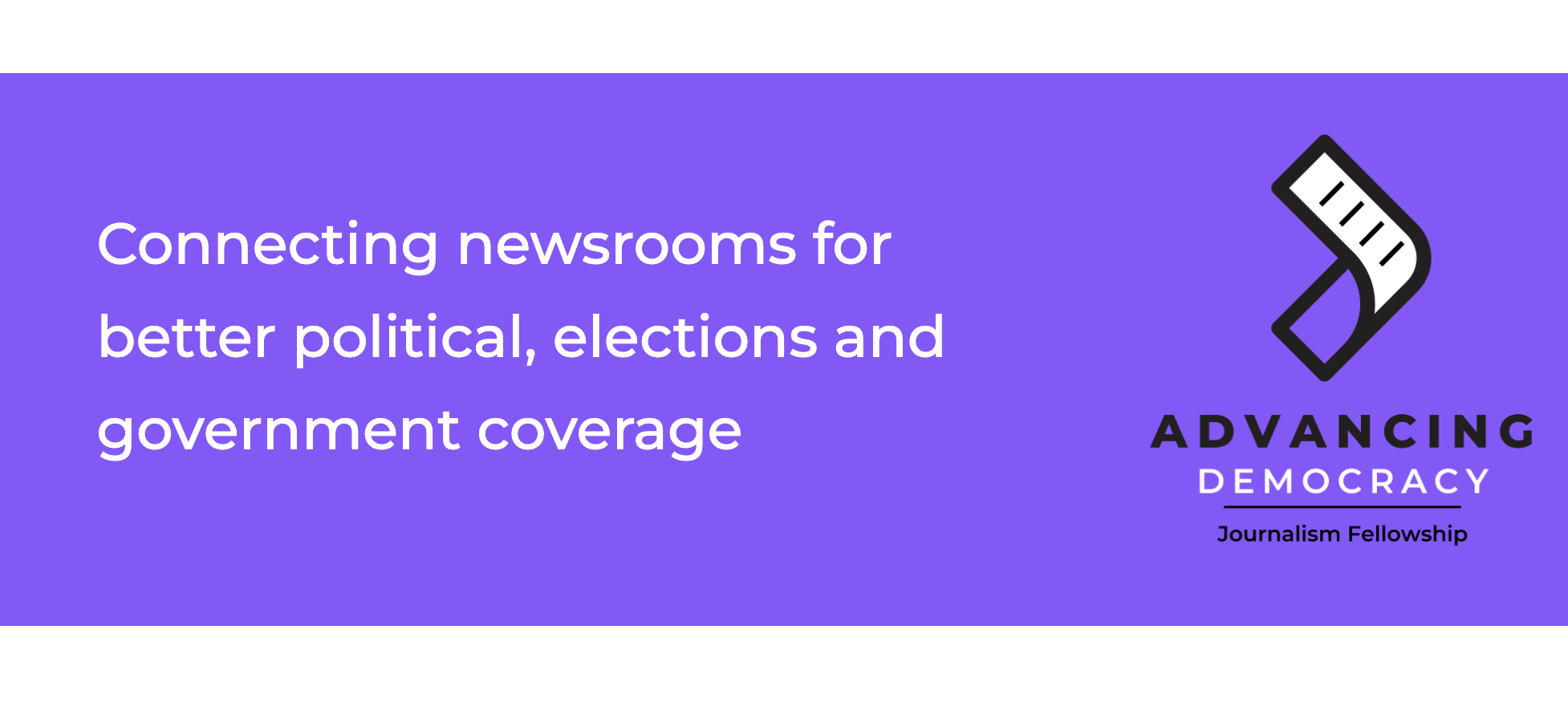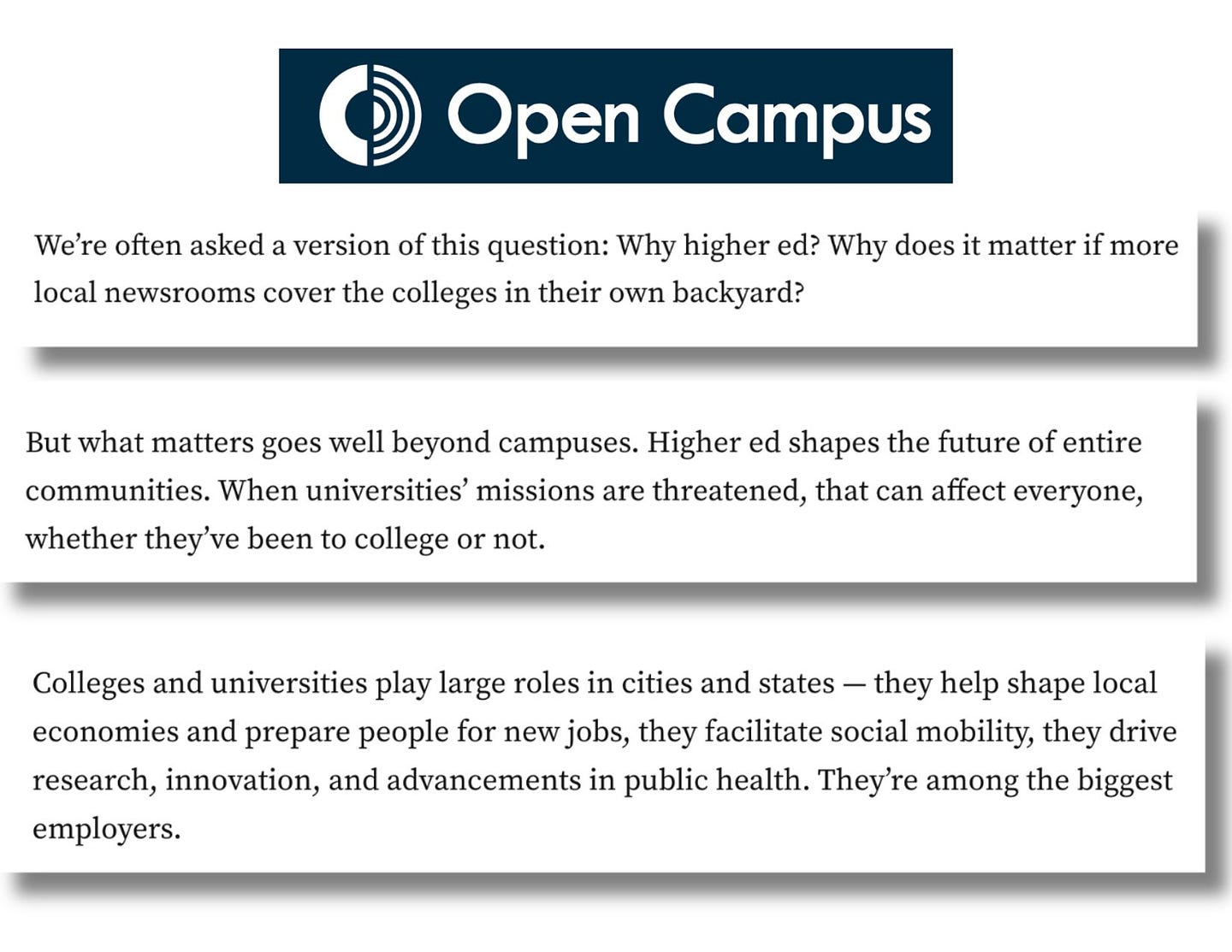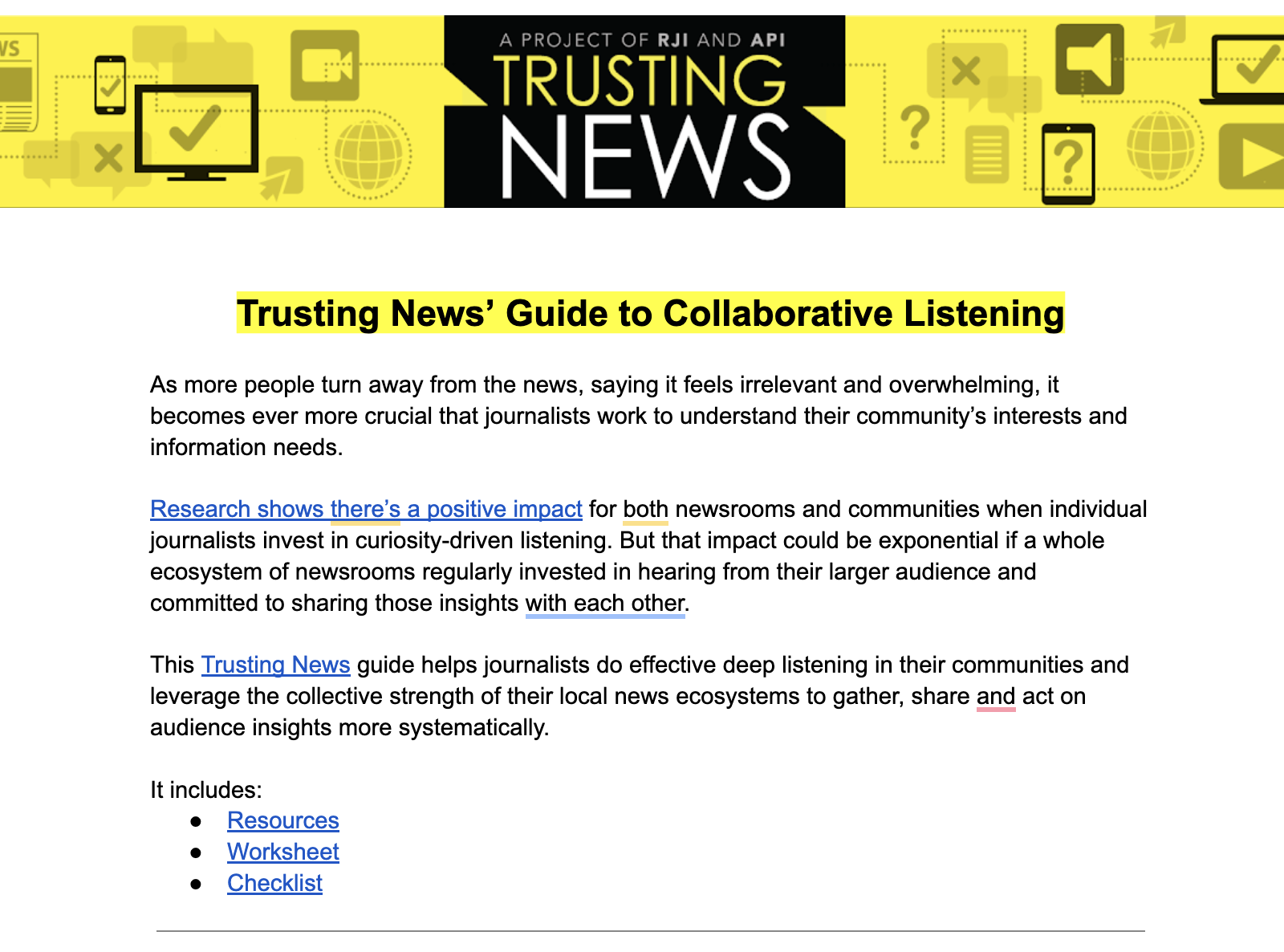
How one newsroom’s audience survey revealed public misunderstandings, frustrations, and curiosity about the newspaper.
Here’s what a newsroom survey reveals about the public’s confusion, frustration and trust
There’s a lot of public confusion around how we as journalists do our job. But the good news is there are people who are curious and want to know more about our process.
That’s what we saw after a Trusting News newsroom partner conducted a survey with their users. (Note: The newsroom wishes to remain anonymous but gave us permission to share what they learned.)
While the survey revealed public misunderstandings and frustrations with the paper, it also shed light on readers’ genuine curiosity about how the newsroom functions.
How the survey was conducted
The newsroom worked with Trusting News to craft questions about how well they serve their community and how they could do better. Some of the questions were scale-based, asking readers to rate how satisfied they were with the newspaper from 1–10. The survey also included a series of open-ended questions such as:
What do you want to know about how we make decisions in our newsroom?
What changes would the newspaper have to make for you to give it a higher rating?
What frustrates you most about our newspaper?
The newsroom promoted the survey in print, online, through email and on social media. They received thousands of responses from a group of anonymous respondents and also from a group of active and former subscribers. We helped analyze responses, looking for how journalists might use the data to be more transparent and answer their community’s questions.
Feedback from the audience
Here are key themes that emerged from the thousands of user responses we looked at:
1. Reporting process, content selection and story selection
Users overwhelmingly wanted to know more about the newsroom’s coverage priorities and story selection. Around half of all the survey responses that were analyzed were related to the reporting process, specifically how the newsroom decides which topics to cover ( and which topics not to cover), who decides the depth of coverage, and the criteria for stories to make it into the paper and on the website.
Sample responses:
- “How [do] you decide which stories are newsworthy and which are not?”
- “How do you decide what to cover — and implicitly then ignore?”
- “What criteria do your editors use as a guide for determining what issues to report on and what lens to use when reporting those issues.”
2. Bias, fairness and fact-checking
Readers said they wanted to know more about how newsroom checks for bias, how sources and facts are verified, and what the paper does to try to actively provide balanced coverage.
Multiple respondents expressed they felt the paper reported stories with an “angle” or “agenda,” but that they desired to see more “neutral,” “balanced” and “impartial” reporting. (These terms are ones Trusting News is continuing to dig deeper on in our quest to understand indicators of trust.)
Sample responses:
- “How do you keep both sides of an issue balanced?”
- “How you determine the lens with which reporters and contributors see/share their stories?”
- “What stories are trustworthy?”
Responses also revealed significant misunderstandings about how the opinion section functions within the newsroom. Readers asked questions about things like how the editorial board and letters to the editor processes work. One person said the paper needed to get rid of the restaurant reviewer because she was “very biased,” not understanding that it’s the reviewer’s job to share their opinion. (We wrote more about this here.)
3. Newsroom leadership and decision-makers
When asked what respondents wanted to know about how the newsroom makes decisions, respondents said: “everything”; “the entire process”; “anything you can tell me, I know nothing.”
Readers had very little information about how the leadership structure and the internal decision-making process works within the newsroom — if it’s top-down from editors, the publisher, or the corporate ownership. And who makes the decisions about allocating resources and changing or eliminating sections in the print paper?
In addition, respondents asked a lot of questions about who makes the priorities and what those priorities are.
Sample responses:
- “Want to know the thought process behind difficult decisions, and who makes those decisions.”
- “Are the decisions a decree by the editor or is it a consensus of the editorial staff?”
4. News partners and national content
Users wanted to know how the newsroom decides how much national content versus local content to use on its website and in the print product, as well as how the newsroom ensures content from the Associated Press and other news partner is trustworthy and factual.
5. Ownership, advertising and funding
These questions were related to if the ownership of the paper influences or changes the content. People also accused the paper of giving advertisers a break, or more coverage, because they give the paper money.
6. Subscriptions and paywalls
Many readers wanted to know why there was a paywall on online content, and why subscription prices were going up even though the paper appeared to be shrinking in size.
What the newsroom can do in response
While these results are specific to one newsroom, we’re sharing them with you because they represent themes we see over and over from our partner newsrooms, in our newsroom coaching and in our Trust 101 class. We bet if you take time to really look at the feedback and comments your own news organization receives, you’ll see similar frustrations, confusion and questions.
We as journalists often forget that our decisions and processes are invisible to our audience unless we make them public. Why did we talk to one source and not another? Why do we follow up on some stories but not others? And even more basic … do we care about things like fairness and accuracy?
In the absence of explanations, people often make negative assumptions about our motives and processes. Respondents to this survey accused the paper of not covering certain communities because it didn’t fit into journalists’ political agendas and made assumptions that coverage decisions were made due to personal biases.
There’s a lot we as journalists can do in our daily work to pull back the curtain and help bridge that information gap.
Here are three things to try:
1. Share who you are, your mission and your priorities
Does your audience know your organization’s mission, values and priorities? These survey results showed that readers want to know more about internal processes and priorities. It’s on us to tell them what those are, and then to show how we use our big-picture mission to make day-to-day coverage decisions.
One effective way to share this with your readers is to create or revamp your organization’s About Us page to include your mission, goals, contact information and an invitation to send feedback. (We’ve been writing about how to do this in our Trust Tips newsletter.)
2. Explain your story selection process and depth of reporting
Your organization likely puts a lot of thought into choosing which stories and topics to cover. But readers usually see individual pieces of content, not the full breadth of our work, so it’s helpful to point out the extent our coverage whenever possible.
One way you can do this is by using language on social media chatter to direct readers’ attention whenever you have an in-depth, local story. Or, if it’s a topic you report on often, you can also remind your audience the depth of your coverage by linking to past stories in social media chatter, in a newsletter, or in the story itself. You could also start including editor’s notes or boxes in local enterprise stories that explain how and why you reported on the specific topic.
If you want to level up, write an explainer story about your process for deciding coverage. You then easily share that link whenever questions may arise in the future.
3. Tell your audience how you strive to be fair
Try to anticipate when readers might accuse you of being biased or publishing “fake news,” and put language in the story that lets them know you strive for fairness.
You can do this by including an editor’s note at the top of stories, or using language on social media, on air or in newsletters telling readers how many sources you interviewed or how you tried to include multiple perspectives. Also, let readers know how they can reach out if they think there’s a mistake or inaccurate information.
Another effective way to build on this transparency is to clearly label opinion content and explain how it differs from news content. Add the word “opinion” in headlines and explain within the story itself how the editorial team operates separately from the news operation. It may seem simple, yet the survey results showed readers had trouble differentiating the two types of content. (We wrote about that here.)
At Trusting News, we learn how people decide what news to trust and turn that knowledge into actionable strategies for journalists. We train and empower journalists to take responsibility for demonstrating credibility and actively earning trust through transparency and engagement. Subscribe to our Trust Tips newsletter. Follow us on Twitter and LinkedIn. Read more about our work at TrustingNews.org.

Project manager Mollie Muchna (she/her) has spent the last 10 years working in audience and engagement journalism in local newsrooms across the Southwest. She lives in Tucson, Arizona, where she is also an adjunct professor at the University of Arizona’s School of Journalism. She can be reached at mollie@trustingnews.org and on Twitter @molliemuchna.



